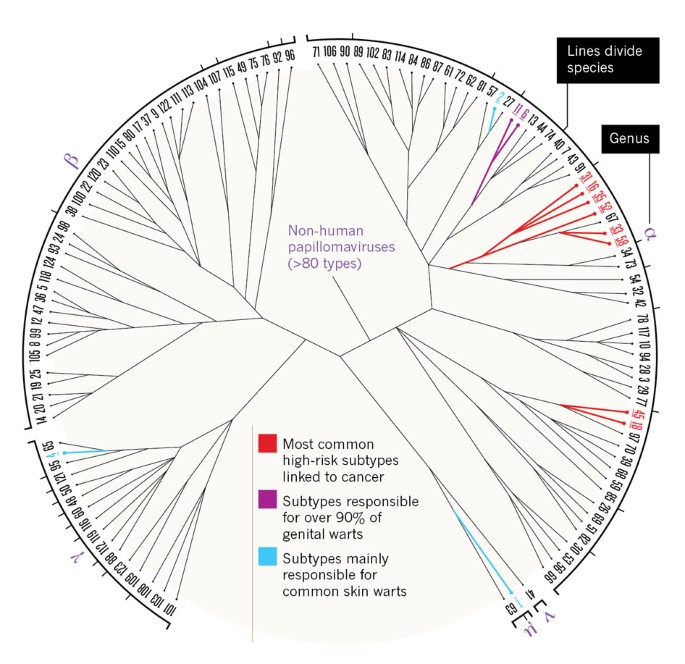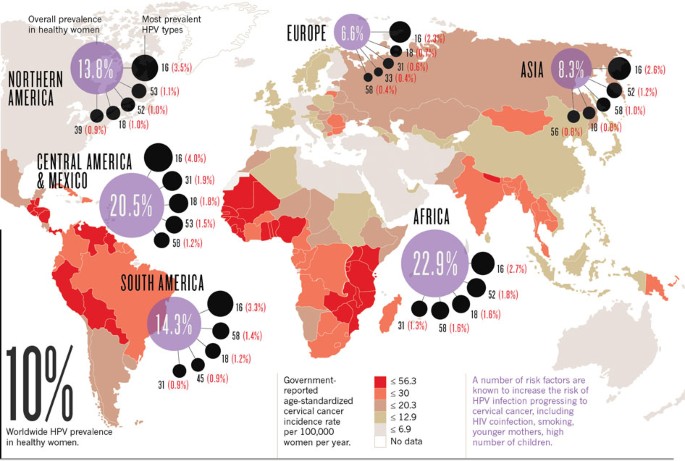HPV: The global burden (original) (raw)
- Outlook
- Published: 29 August 2012
Nature volume 488, pages S2–S3 (2012)Cite this article
- 33k Accesses
- 145 Citations
- 17 Altmetric
- Metrics details
Subjects
Human papillomavirus (HPV) has become synonymous with cervical cancer, but its actual footprint is much bigger, by James Mitchell Crow.
HPV comes in many forms
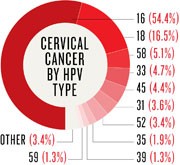
Credit: WHO/ICO INFORMATION CENTRE ON HPV AND CERVICAL CANCER
Tens of different papillomavirus types infect humans, but only a handful are harmful. Mapping HPV types by genus (see Figure 1) reveals that certain species often cause similar warts and lesions, with most of the HPV types that cause cancer coming from the same species. However, shared pathology doesn’t always indicate close family ties; HPV types 1, 2 and 4, which all cause common skin warts, are distant relations.
Figure 1
Bernard H-U et al. Virology 401, 70–79 (2010).
How HPV can lead to cancer
Although HPV infections are common, 90% of cervical infections are cleared within 2 years (see Figure 2). If infection persists, abnormal cells can begin to appear. Only if these cervical cells cross the basal membrane and spread into the tissues beneath does the condition become cervical cancer.
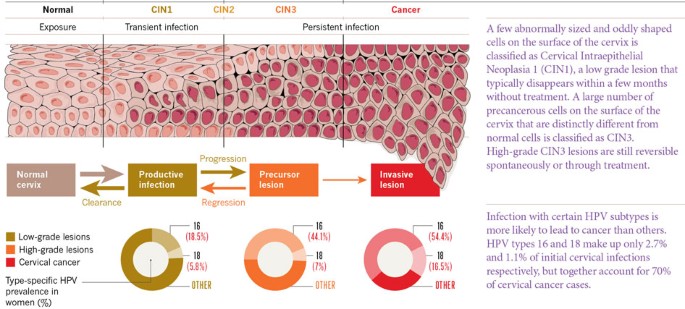
Figure 2
Infection rates and cancer cases
Cervical HPV infection rates vary around the world (see Figure 3), as does the number of infected women who go on to develop cervical cancer.
Figure 3
WHO/ICO INFORMATION CENTRE ON HPV AND CERVICAL CANCER; DE SANJOSE, S. ET AL. LANCET INFECT. DIS. 7 453–459 (2007).
HPV and cancer
Although the overwhelming majority of cancers caused by HPV infection are of the cervix, infection with the virus can also lead to cancers in other parts of the body.
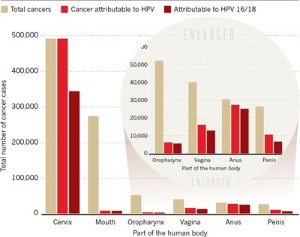
Credit: Credit: PARKIN DM, BRAY F. VACCINE 24 (SUPPL 3):S11–S25 (2006).
The future of HPV screening
HPV tests are proving more effective than traditional cytology screens at catching early-stage infections that progress to high-risk lesions.
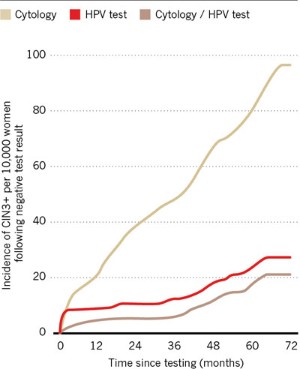
Credit: PARKIN DM, BRAY F. VACCINE. 2006;24 (SUPPL 3):S11–S25. J. DILLNER ET AL., BMJ 2008; 377: A1754, WHO/ICO INFORMATION CENTRE ON HPV AND CERVICAL CANCER. SANJOSE DE, S. LANCET INFECT. DIS. 7 453–459 (2007).
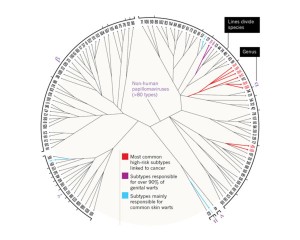
Credit: Bernard H-U et al. Virology 401, 70–79 (2010).
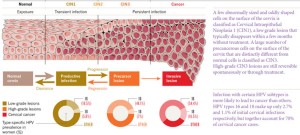
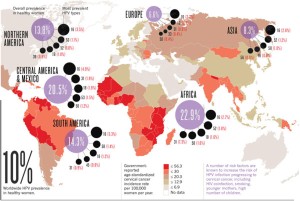
Credit: WHO/ICO INFORMATION CENTRE ON HPV AND CERVICAL CANCER; DE SANJOSE, S. ET AL. LANCET INFECT. DIS. 7 453–459 (2007).
Authors
- James Mitchell Crow
You can also search for this author inPubMed Google Scholar
Rights and permissions
About this article
Cite this article
Crow, J. HPV: The global burden.Nature 488, S2–S3 (2012). https://doi.org/10.1038/488S2a
- Published: 29 August 2012
- Issue Date: 30 August 2012
- DOI: https://doi.org/10.1038/488S2a
